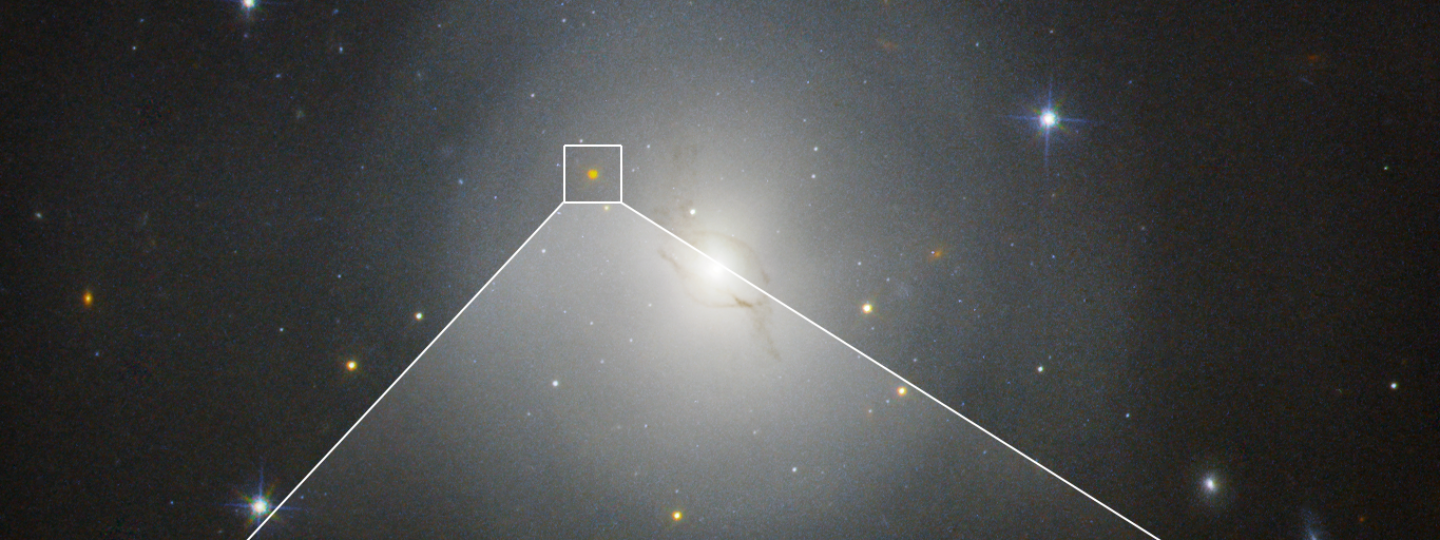When neutron stars collide, they produce a violent explosion. Data from the only well observed collision show that the explosion was perfectly spherical, completely contrary to expectations. How this is possible remains a mystery, but the discovery may provide a new key to fundamental physics and to measuring the age of the Universe. The discovery was made by an international collaboration led by astrophysicists from the University of Copenhagen and including researchers from the University of Turku. The research has just been published in the journal Nature.
Kilonovae are the giant explosions that occur when two neutron stars that orbit each other finally collide. They are responsible for creating both great and small things in the universe: from black holes, to the atoms in the gold ring on your finger, and the iodine in our bodies. They give rise to some of the most extreme physical conditions in the Universe, and it is under these extreme conditions that the Universe creates the heaviest elements of the periodic table, such as gold, platinum, and uranium.
However, there is still a great deal we do not know about this violent phenomenon. When a kilonova was detected at 140 million light-years away in 2017, it was the first time that scientists could gather data from a suite of ground- and space-based telescopes. Scientists around the world are still interpreting the data from this colossal explosion.
"You have two super-compact stars that orbit each other 100 times a second before collapsing. Our intuition, and all previous models, say that the explosion cloud created by the collision must have a flattened and rather asymmetrical shape," says the leader of the study Albert Sneppen, PhD student at the Niels Bohr Institute in Copenhagen.
This is why he and his research colleagues were surprised to find that this is not the case at all for the kilonova from 2017. It is completely symmetrical and has a shape close to a perfect sphere.
Rubina Kotak, co-author of the study at the University of Turku, says: “It is incredible and completely counter-intuitive to find that the explosion is as spherical as we found it to be. However, the data demand that it is.”
The spherical shape is a mystery
But how the kilonova can be spherical is a real mystery. According to the researchers, there must be unexpected physics at play:
"The most likely way to make the explosion spherical is if a huge amount of energy blows out from the center of the explosion and smooths out a shape that would otherwise be asymmetrical. So the spherical shape tells us that there is probably a lot of energy in the core of the collision, which was unforeseen," says Albert Sneppen.
When the neutron stars collide, they are united, briefly as a single hypermassive neutron star, which then collapses to a black hole. The researchers speculate whether it is in this collapse that a large part of the secret is hidden:
"Perhaps a kind of 'magnetic bomb' is created at the moment when the energy from the hypermassive neutron star's enormous magnetic field is released when the star collapses into a black hole. The release of magnetic energy could cause the matter in the explosion to be distributed more spherically. In that case, the birth of the black hole may be very energetic," says Darach Watson.
Rubina Kotak, adds: “currently, no single theory can explain all aspects of the data. We are eagerly looking forward to discovering kilonovae in the coming years and measuring their shapes. Projects such as the Gravitational-wave Optical Transient Observer (GOTO), which the University of Turku is a partner in, will play a key role in supplying us with these targets.”
A New Cosmic Ruler
The shape of the explosion is also interesting for an entirely different reason:
"Among astrophysicists there is a great deal of discussion about how fast the Universe is expanding. The speed tells us, among other things, how old the Universe is. And the two methods that exist to measure it disagree by about a billion years. Here we may have a third method that can complement and be tested against the other measurements," says Albert Sneppen.
Rubina Kotak adds, “we have been using other types of explosions (“supernovae”) to measure distances, but kilonovae may provide a cleaner and more precise way of doing so.” Darach
Watson continues: "Knowing the shape is crucial here, because if you have an object that is not spherical, it emits differently, depending on your sight angle.”
The article was published in Nature in February.


